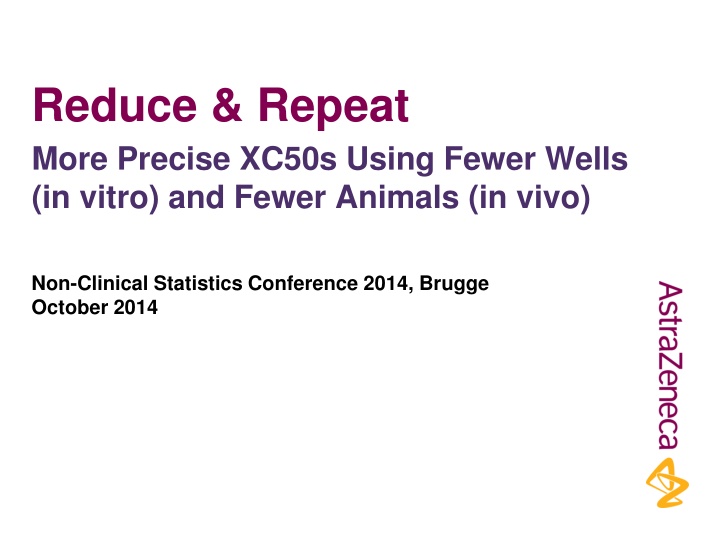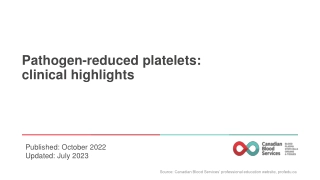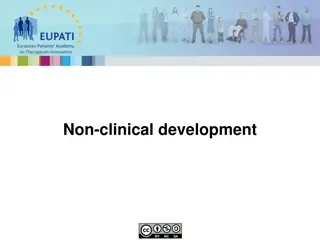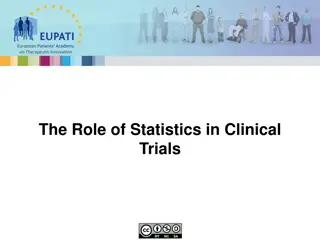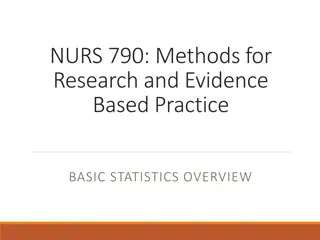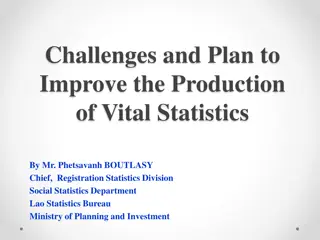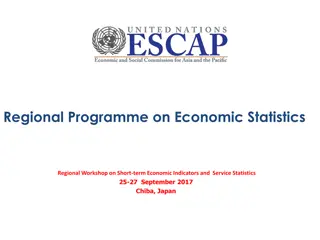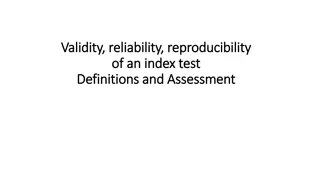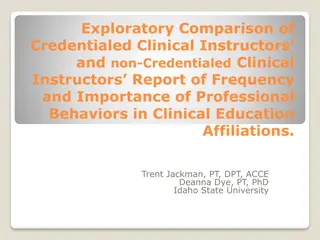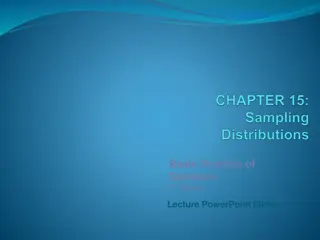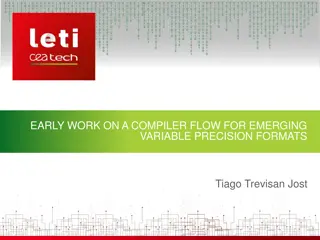Enhancing XC50 Precision with Reduced Resources in Non-Clinical Statistics
Explore innovative approaches presented in the Non-Clinical Statistics Conference 2014 to reduce resources while maintaining precision in determining XC50 values, emphasizing the use of fewer wells in vitro and fewer animals in vivo. Jonathan Bright shares insights on reducing wells, replicates, and controls without compromising data quality, offering cost-effective solutions for experimental design.
Download Presentation

Please find below an Image/Link to download the presentation.
The content on the website is provided AS IS for your information and personal use only. It may not be sold, licensed, or shared on other websites without obtaining consent from the author.If you encounter any issues during the download, it is possible that the publisher has removed the file from their server.
You are allowed to download the files provided on this website for personal or commercial use, subject to the condition that they are used lawfully. All files are the property of their respective owners.
The content on the website is provided AS IS for your information and personal use only. It may not be sold, licensed, or shared on other websites without obtaining consent from the author.
E N D
Presentation Transcript
Reduce & Repeat More Precise XC50s Using Fewer Wells (in vitro) and Fewer Animals (in vivo) Non-Clinical Statistics Conference 2014, Brugge October 2014
Raw Conc-Response Data Innovative Medicines | Discovery Sciences 2 Jonathan Bright | September 2014
Only Half of the Concs Innovative Medicines | Discovery Sciences 3 Jonathan Bright | September 2014
Only Half of the Replicates Innovative Medicines | Discovery Sciences 4 Jonathan Bright | September 2014
Only Half of the Concs and Half of the Replicates Innovative Medicines | Discovery Sciences 5 Jonathan Bright | September 2014
Only Half of the Concs and Half of the Replicates and Half of the Controls Innovative Medicines | Discovery Sciences 6 Jonathan Bright | September 2014
IC50 and 95% Confidence Interval Innovative Medicines | Discovery Sciences 7 Jonathan Bright | September 2014
Findings #1 For a well-behaved assay, the resource (wells) may be dramatically reduced with little impact on either the estimate of the XC50 or its confidence interval Well-behaved - Max and min controls that safely position the curve top and bottom - Conc-response data that have the right sort of sigmoid shape - Acceptable to overlook details such as biphasic and partial inhibition May be exploited - Throughput - Cost - Compound use Innovative Medicines | Discovery Sciences 8 Jonathan Bright | September 2014
Second Set of Raw Conc-Response Data Innovative Medicines | Discovery Sciences 9 Jonathan Bright | September 2014
IC50 and 95% Confidence Interval Innovative Medicines | Discovery Sciences 10 Jonathan Bright | September 2014
IC50 and 95% Confidence Interval Innovative Medicines | Discovery Sciences 11 Jonathan Bright | September 2014
Findings #2 Run-to-run differences in XC50 are massive compared to the small changes in XC50 that occur as a result of reducing the resource (wells) on any given run Put in terms of components of variation - Between run variation dominates within-run variation - Within-run variation changes hardly at all as the number of concs and number of replicates changes May be exploited - Reduce the resource per run - Repeat - Average Innovative Medicines | Discovery Sciences 12 Jonathan Bright | September 2014
IC50 vs Run Innovative Medicines | Discovery Sciences 13 Jonathan Bright | September 2014
IC50 vs Run Innovative Medicines | Discovery Sciences 14 Jonathan Bright | September 2014
IC50 vs Run Innovative Medicines | Discovery Sciences 15 Jonathan Bright | September 2014
IC50 vs Run Innovative Medicines | Discovery Sciences 16 Jonathan Bright | September 2014
IC50 vs Run Innovative Medicines | Discovery Sciences 17 Jonathan Bright | September 2014
IC50 vs Run Innovative Medicines | Discovery Sciences 18 Jonathan Bright | September 2014
In Vivo A situation similar to the in vitro case has been observed, whereby study-to-study differences are the main component of variation - Was it a good day or a bad day for compound X 2 Start Strategy (Brian Middleton) - Start half the planned animals (reduce) - Independently run the second half (repeat) - Average Gives a superior estimate of the e.g. XC50 or XD50 Provides in some cases a chance to change doses for the second start Innovative Medicines | Discovery Sciences 19 Jonathan Bright | September 2014
Summary In both in vitro and in vivo settings there are large run-to-run or study-to-study differences when a compound is retested - Root cause analysis Exploit by - reducing the resource (wells or animals) on a given occasion - repeating the experiment - averaging across the experiments Reduce - Throughput, cost and compound benefits Reduce and Repeat - Precision benefit + Innovative Medicines | Discovery Sciences 20 Jonathan Bright | September 2014
Acknowledgement and Reference Siller H, Taylor JD, Middleton B. Two-start design within a Sephadex inflammatory model A means to generate reliable ED50 data whilst significantly reducing the number of animals used. Pulm Pharmacol Ther 2012; 25:223-227. Innovative Medicines | Discovery Sciences 21 Jonathan Bright | September 2014
Extra Slide Innovative Medicines | Discovery Sciences 22 Jonathan Bright | September 2014
Confidentiality Notice This file is private and may contain confidential and proprietary information. If you have received this file in error, please notify us and remove it from your system and note that you must not copy, distribute or take any action in reliance on it. Any unauthorized use or disclosure of the contents of this file is not permitted and may be unlawful. AstraZeneca PLC, 2 Kingdom Street, London, W2 6BD, UK, T: +44(0)20 7604 8000, F: +44 (0)20 7604 8151, www.astrazeneca.com Innovative Medicines | Discovery Sciences 23 Jonathan Bright | September 2014
